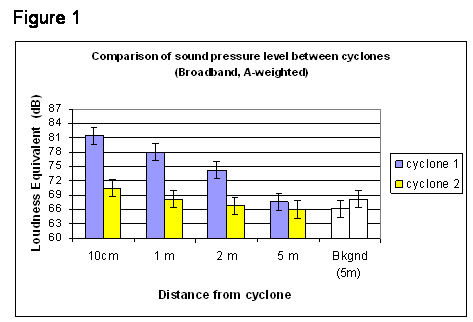Grantee Research Project Results
2008 Progress Report: PM Characterization and Exposure Assessment (Project 2)
EPA Grant Number: R832417C002Subproject: this is subproject number 002 , established and managed by the Center Director under grant R832417
(EPA does not fund or establish subprojects; EPA awards and manages the overall grant for this center).
Center: Center for the Study of Childhood Asthma in the Urban Environment
Center Director: Hansel, Nadia
Title: PM Characterization and Exposure Assessment (Project 2)
Investigators: Geyh, Alison , Breysse, Patrick N.
Current Investigators: Geyh, Alison , Ondov, John M. , Breysse, Patrick N. , Rule, Ana , Han, Inkyu , Ramos-Bonilla, Juan , Datta, Saugatta , Chillrud, Steven
Institution: The Johns Hopkins University
Current Institution: The Johns Hopkins University , Kansas State University , Lamont Doherty Earth Observatory of Columbia University , University of Maryland - College Park
EPA Project Officer: Chung, Serena
Project Period: October 1, 2005 through September 30, 2010
Project Period Covered by this Report: October 1, 2007 through September 30,2008
RFA: Particulate Matter Research Centers (2004) RFA Text | Recipients Lists
Research Category: Human Health , Air
Objective:
Approach:
We will collect bulk PM samples for bioassays and bulk and integrated samples for detailed characterization to include mass, inorganic ions, elemental carbon and organic compounds, specifically polycyclic aromatic hydrocarbons , elemental metals and their oxides, and sulfur isotope ratios. We will also evaluate PM characteristics in relation to particle size. We will use this matrix of information to characterize differences in PM composition and biological response by location. The objectives of Project 2 include: 1) developing new methods for collecting bulk PM for use in biological assays; 2) developing a portable system the characterization of chemical and physical properties of ambient PM; 3) identifying specific regional differences in PM characteristics that may contribute to differential biological responses in vitro and in vivo bioassay systems; and 4) assessing a relationship between human exposure to PM2.5 and biological response during a high PM2.5 exposure period and a low PM2.5 exposure periods. By successfully completing this project, we anticpate providing a better understanding of how differences in physiochemical composition impact PM health effects.
Progress Summary:

|
Table 1. Monitoring Schedule
|
|||
|
Order
|
County
|
Start Date
|
End Date
|
|
1
|
King, WA*
|
October 25, 2007
|
December 1, 2007
|
|
2
|
Sacramento CA*
|
January 12, 2008*
|
March 13, 2008
|
|
3
|
Maricopa AZ*
|
June 1, 2008
|
July 20, 2008
|
|
4
|
Hennepin MN**
|
September 15, 2008
|
October 30, 2008
|
|
5
|
Harris TX
|
February 1, 2008
|
April 30, 2008
|
|
6
|
Allegheny PA
|
June 1, 2009
|
July 15, 2009
|
|
7
|
Jefferson KY
|
TBD
|
TBD
|
|
8
|
Kings NY
|
TBD
|
TBD
|
|
9
|
Pinellas FL
|
TBD
|
TBD
|
|
Table 2. Summary of PM Sampling
|
||||||
|
Continuous PM Monitoring Instruments
|
Integrated PM Sampling Instruments
|
|||||
|
Type
|
Analyte (units)
|
Sampling Frequency
|
Type
|
Analyte
|
Collection Frequency
|
No. samples per sampling period
|
|
TSI Aerosol Particle Sizer
|
<0.5 - 20 um (particle counts/cm3)
|
every 15 min
|
Hopkins Sequential Cyclone System
|
coarse PM
|
integrated over entire site monitoring period
|
1
|
|
fine PM
|
integrated over entire site monitoring period
|
1
|
||||
|
TSI Scanning Mobility Particle Analyzer
|
17.9 - 881.7 nm (particle counts/cm3)
|
every 15 min
|
Harvard Impactor (Telfon filters)
|
PM10
|
7 days
|
2
|
|
PM2.5
|
7 days
|
2
|
||||
|
Echochem PAS2000
|
un-differentiated particle-bound PAHs (ng/m3)
|
every 5 min
|
PMASS (quartz fiber filters)
|
PM2.5
|
7 days
|
4
|
|
Magee Scientific Aethalometer
|
black carbon (ng/m3)
|
every 5 min
|
|
|
|
|
|
Thermo Environmental SPA 5020
|
particulate sulfate (ug/m3)
|
every 15 min
|
|
|
|
|
|
Table 3. Bulk PM mass results
|
|||
|
Site
|
Dates
|
Coarse PM (mg)
|
Fine (mg)
|
|
Seattle
|
Nov 2007
|
89
|
705
|
|
Sacramento
|
Feb / Mar 2008
|
111
|
View all 13 publications for this subproject
Supplemental Keywords:air pollution, PM10, mobile sources, Bulk particle collection, cyclone, exhaled breath condensate, markers of inflammation, Health, RFA, Scientific Discipline, Air, PHYSICAL ASPECTS, Health Risk Assessment, Physical Processes, Risk Assessments, particulate matter, Epidemiology, particulate matter components, human exposure, long term exposure, aersol particles, atmospheric particles, ambient particle health effects, exposure, atmospheric aerosol particles, ultrafine particulate matter, atmospheric particulate matter, acute cardiovascular effects, cardiovascular disease, human health riskRelevant Websites:www.jhsph.edu/particulate_matterProgress and Final Reports:Original AbstractMain Center Abstract and Reports:R832417 Center for the Study of Childhood Asthma in the Urban Environment Subprojects under this Center: (EPA does not fund or establish subprojects; EPA awards and manages the overall grant for this center). The perspectives, information and conclusions conveyed in research project abstracts, progress reports, final reports, journal abstracts and journal publications convey the viewpoints of the principal investigator and may not represent the views and policies of ORD and EPA. Conclusions drawn by the principal investigators have not been reviewed by the Agency. Project Research Results
13 publications for this subproject
2 journal articles for this subproject Main Center: R832417 89 publications for this center 64 journal articles for this center Site NavigationRelated InformationContact Us to ask a question, provide feedback, or report a problem.
Last updated April 28, 2023
|
